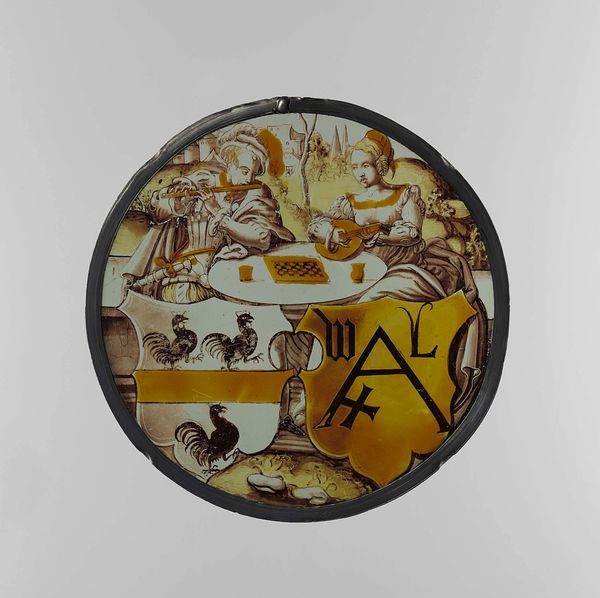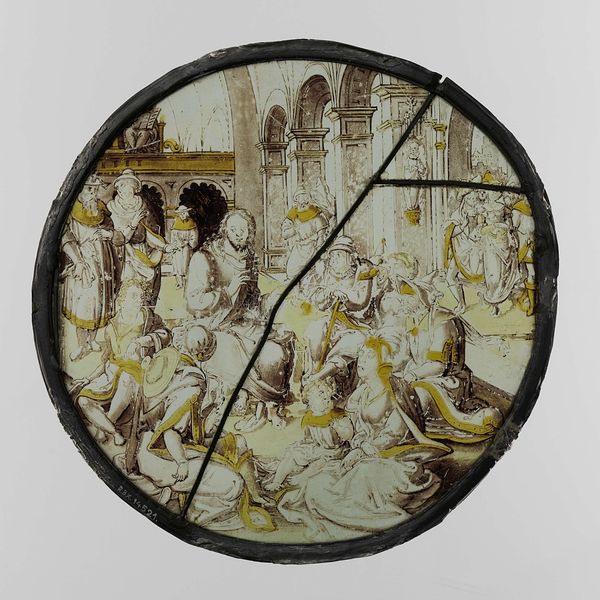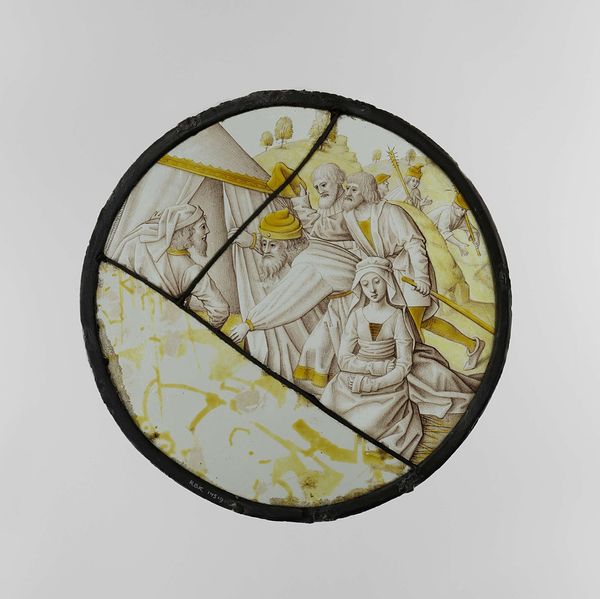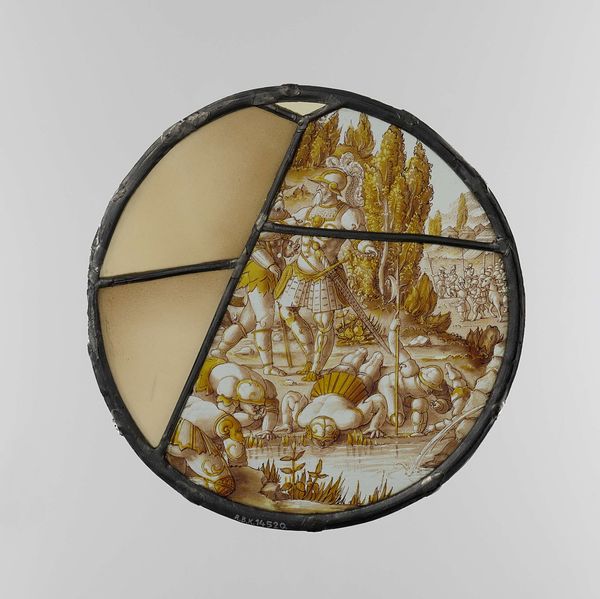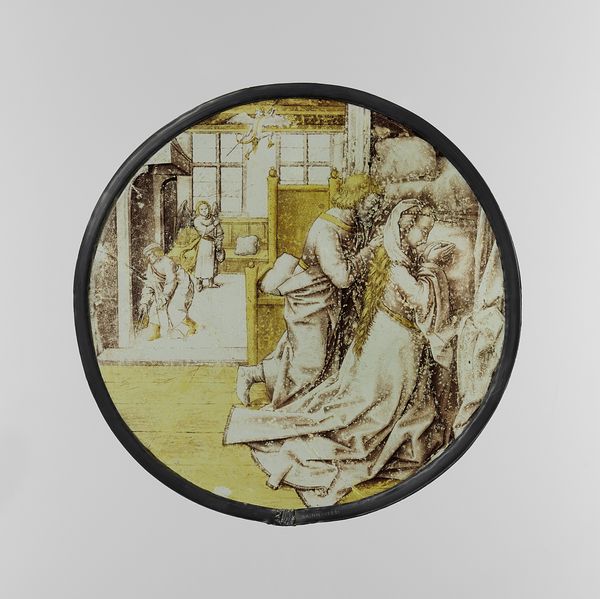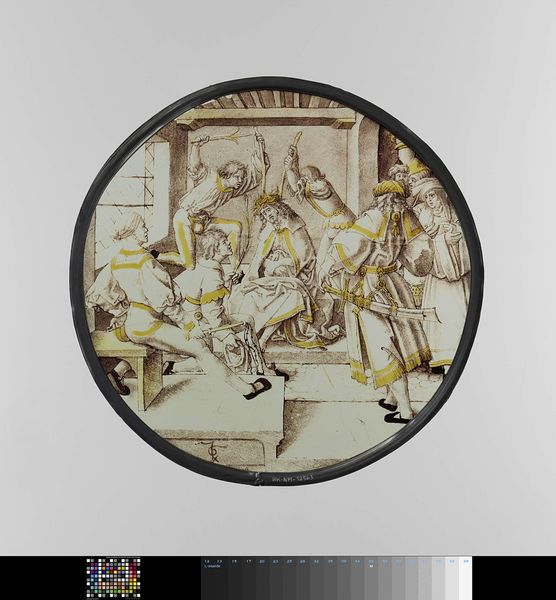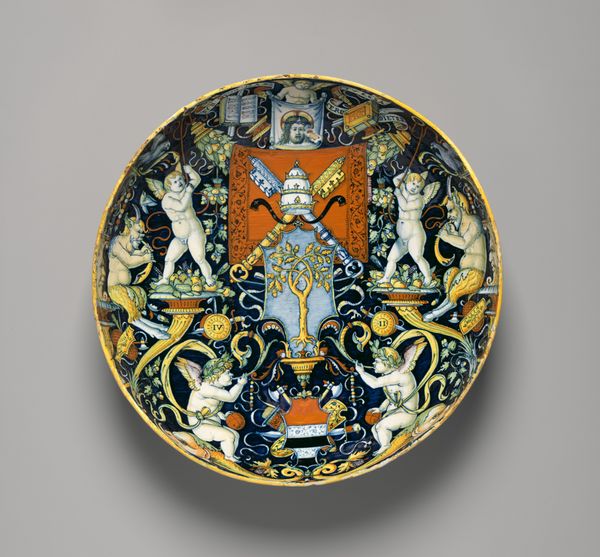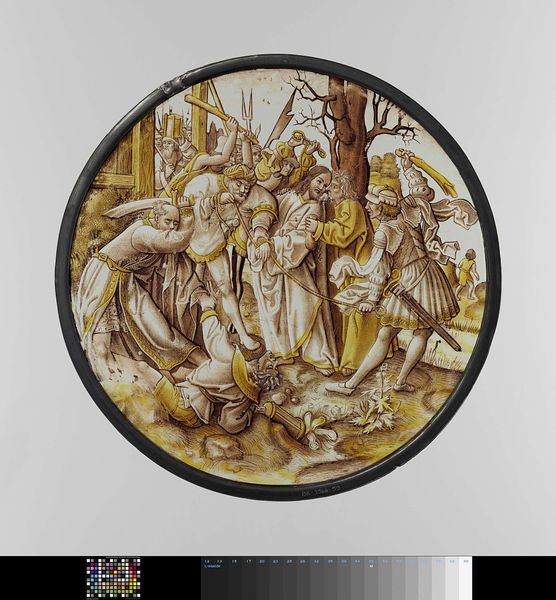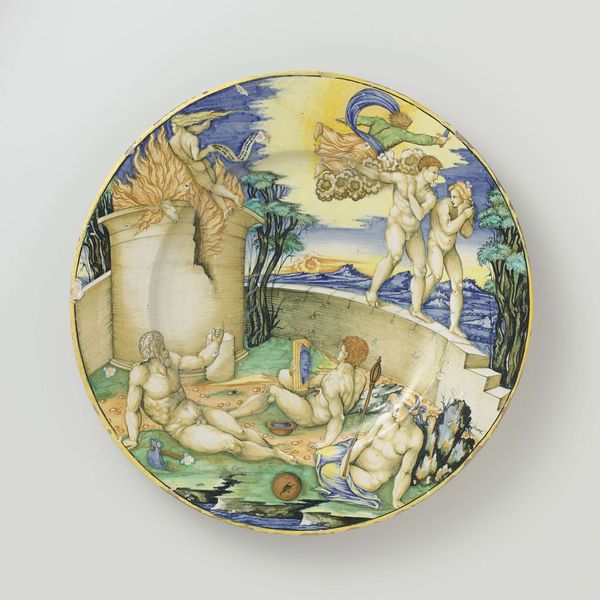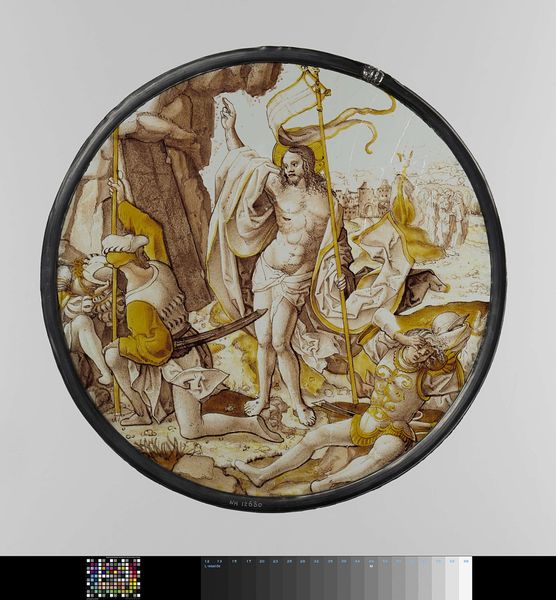
glass
#
sculpture
#
glass
#
geometric
#
ceramic
#
genre-painting
#
history-painting
#
northern-renaissance
Copyright: Rijks Museum: Open Domain
Editor: Here we have "Ruit met de Verloren Zoon," or "Roundel with the Prodigal Son," an anonymous glass painting from around 1500-1525. It feels so intimate, like we’re peering into a private moment. What strikes you most about this piece? Curator: Well, the "Prodigal Son" is a popular biblical parable often read as a story of sin, repentance, and forgiveness, right? But placed in a Northern Renaissance context, I'm wondering how much it speaks to broader societal anxieties about wealth, family structures, and individual morality. Consider how genre painting was beginning to emerge. Does this blend sacred themes with everyday life to comment on contemporary social values? Editor: That's a fascinating way to frame it! I was mainly focused on the beautiful, detailed clothing, but now I see how the painting stages a sort of morality play, a familiar Renaissance theme that speaks volumes about its audience's concerns. Curator: Exactly! Look at the setting, the costumes. This isn't just about a singular, biblical 'son.' It reflects how social expectations might conflict with the individual's trajectory. Consider how the viewer is positioned as an observer—complicit, perhaps, in judging this narrative. It forces the viewer to ponder social pressures in this particular timeframe, doesn’t it? Editor: I never thought about it that way. It makes the story feel so much more immediate. The artistry serves a specific cultural purpose! I’ll definitely carry that understanding into my future studies. Curator: Precisely! Recognizing how artworks both reflect and shape the cultures that create them really is essential to engaging art history as an intellectual practice.
Comments
No comments
Be the first to comment and join the conversation on the ultimate creative platform.
